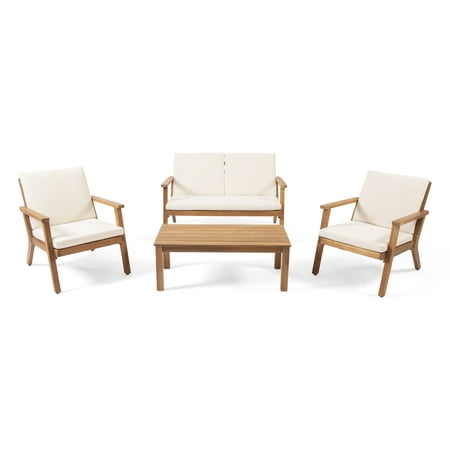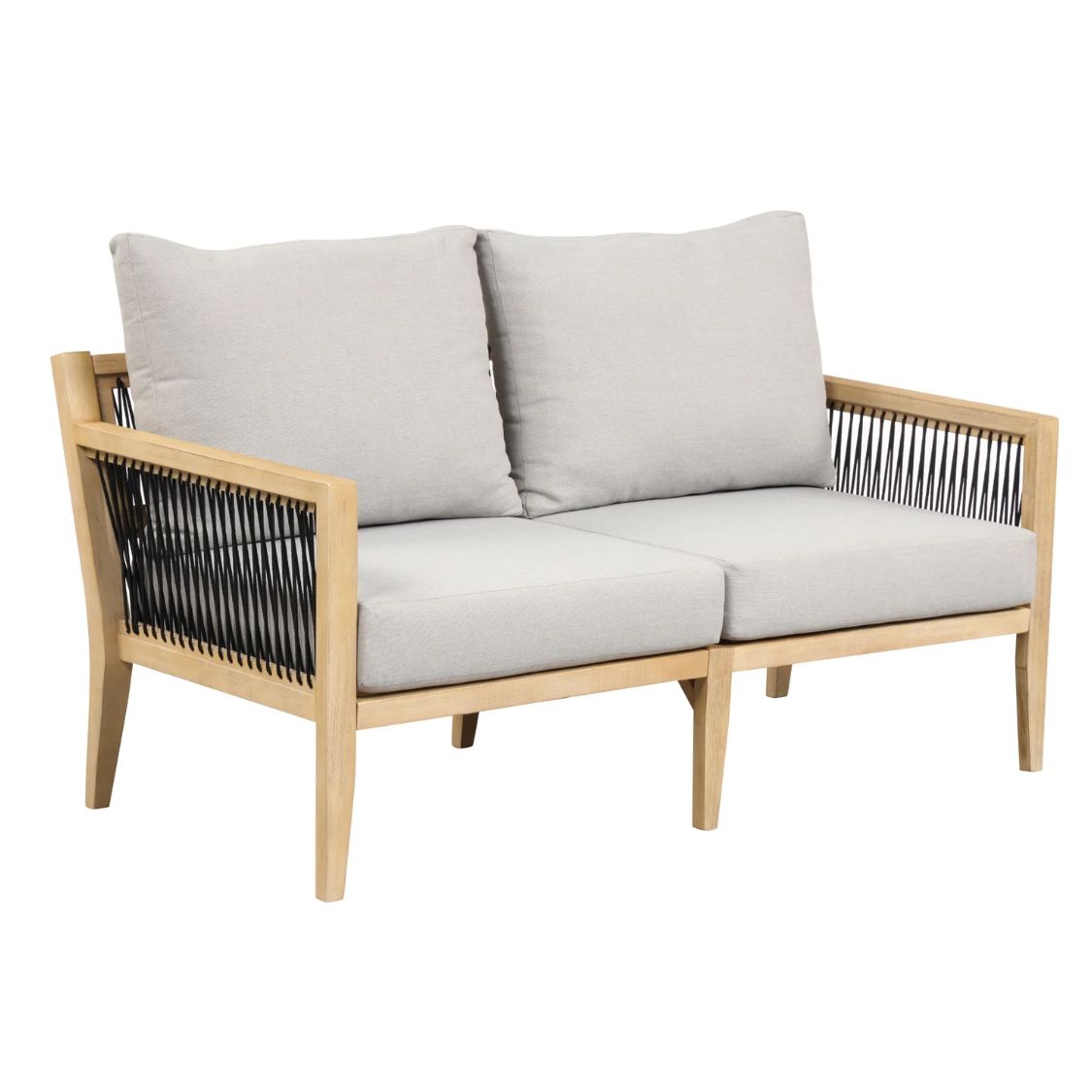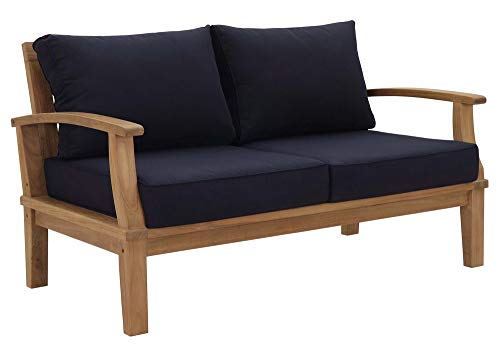Teak vs Acacia — Which is the Right Choice for Outdoor Furniture?
From price to practicality, experts reveal which of these two super stylish woods is actually best for furnishing your yard
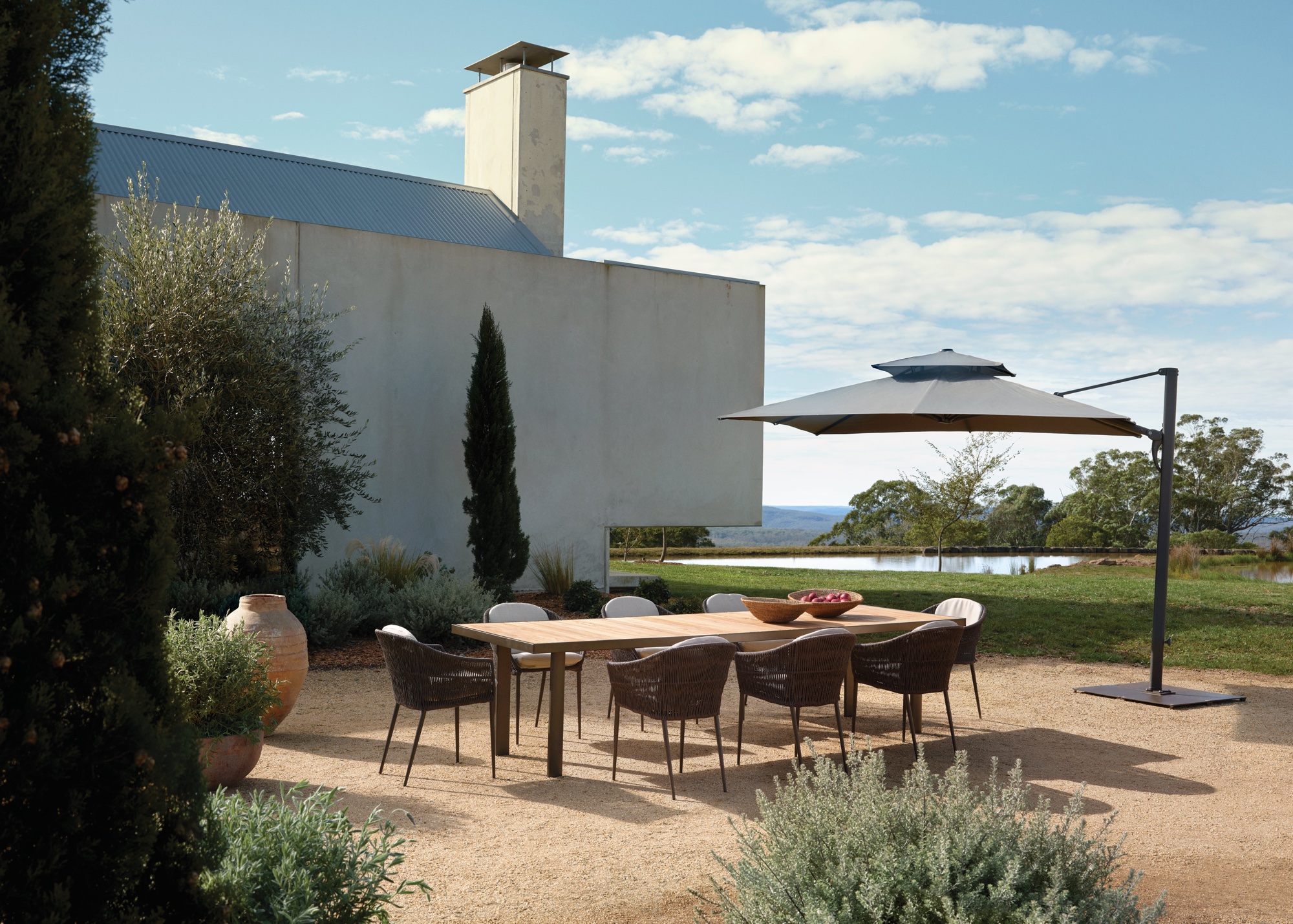
When it comes to wood outdoor furniture, there are usually two main types to choose from when you're looking at modern, stylish furniture: teak or acacia. These two woods are commonly used for outdoor furniture thanks to their durability and organic-luxe aesthetic.
"Teak and acacia are two of the most popular hardwoods used in outdoor furniture, and both are excellent choices for various reasons," says Victoria Fletcher, a senior buyer for outdoor furniture brand Garden Trading. "However, while they share similarities in durability and aesthetic appeal, each wood has distinct characteristics that might make one a better option depending on the specific needs of the user."
But which of the two is better when it comes to wood furniture? Overall, teak is often considered better quality due to its extraordinary durability, minimal maintenance needs, and long-term value. However, acacia offers a strong alternative for those looking for a more budget-friendly option without sacrificing too much in terms of durability or aesthetics.
Here's a break down of their pros and cons so you can make an informed decision with your
Teak vs Acacia: Which Wood is Best For Your Needs?
Both teak and acacia make great woods for outdoor furniture use, and are comparable in terms of being hardwoods that are both durable options.
"Teak is revered for its unparalleled durability, resistance to water, and natural oils that make it incredibly low maintenance," says Victoria. "Its golden-brown hue ages gracefully to a silvery-grey patina, making it a timeless choice for outdoor spaces.
"Teak's high oil content also protects it from pests and decay, ensuring longevity even in harsh weather conditions."
She continues: "Acacia, on the other hand, is celebrated for its robust strength and natural resistance to wear and tear. It can be a more affordable alternative to teak, with a warm, rich color that can vary from light brown to deep amber."
What are the Pros and Cons of Acacia?
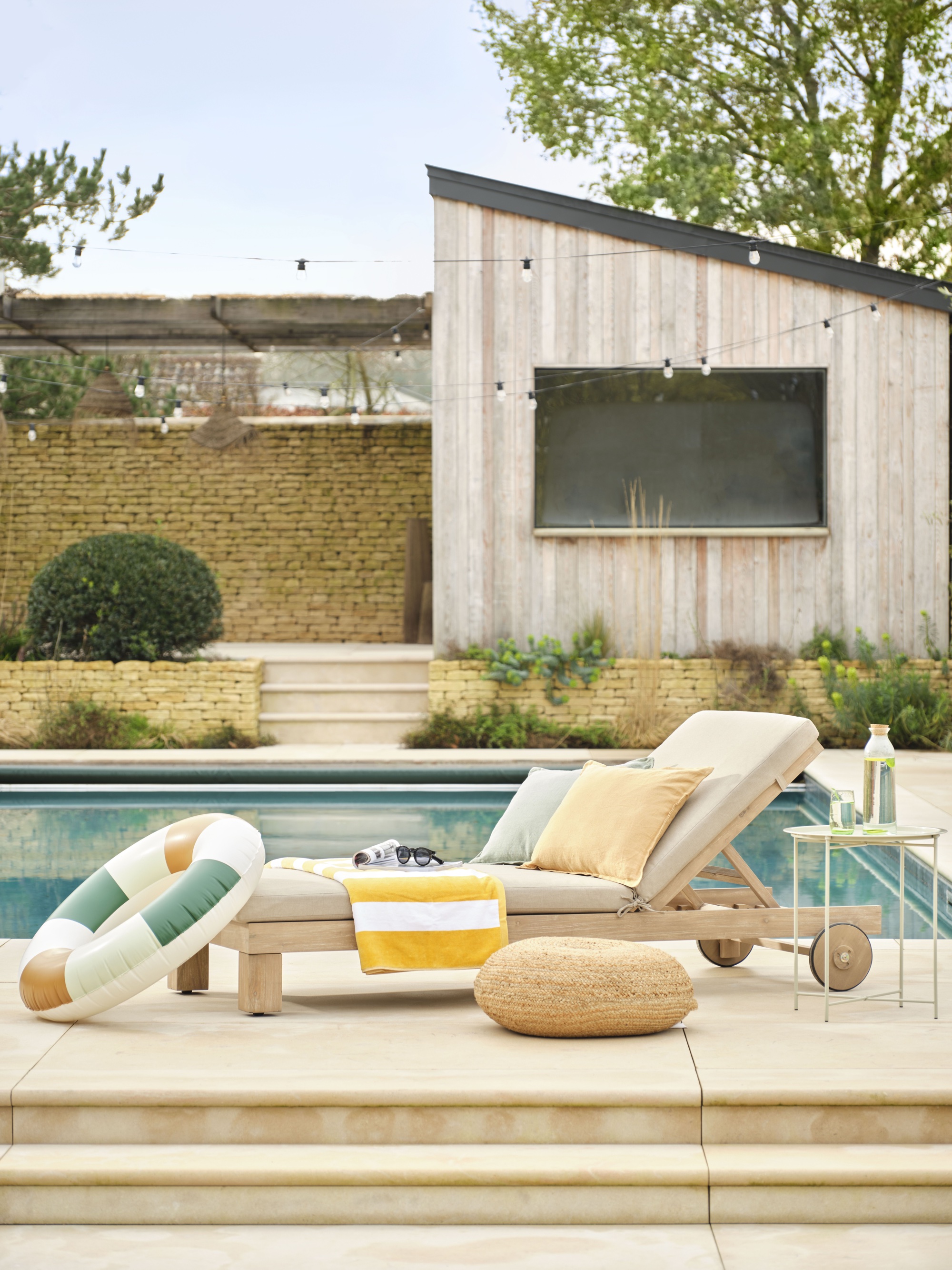
Pros:
- Strength: Acacia is a hardwood and is a great strong wood that ranks well on the Janka Hardness scale; a tool used to measure the relative hardness of different woods. Depending on the type of acacia tree the wood is from, it can rank anywhere between 1,100 to 4,270. It is around the same hardness as teak on the scale but can, in some cases, be harder or softer.
- Weather-resistance: Acacia wood offers a good level of weather resistance, being naturally water-resistant and resistant to insect damage and rot. However, in extreme weather conditions it can warp or crack over time. Acacia is often treated with oil to boost it's UV and water resistance properties.
- Price: "Acacia is more affordable than teak, offering good value for the money," says Victoria.
- Sustainability: Acacia wood is extremely fast growing and is a renewable source, meaning it can be replanted and harvested without putting damaging pressure on the environment. It' s a sustainable wood choice for your outdoor furniture.
- Aesthetics: 'Acacia boasts rich, warm hues that can darken over time; often seen in contemporary and rustic outdoor designs," says Victoria.
Cons:
- Maintenance: "Acacia wood requires regular maintenance, including oiling to prevent cracking and drying out, especially in harsher climates," says Victoria.
- Durability: While Acacia is a durable wood and a good choice for outdoor furniture, it is not as durable as teak and is less resistant to moisture and extreme climates.
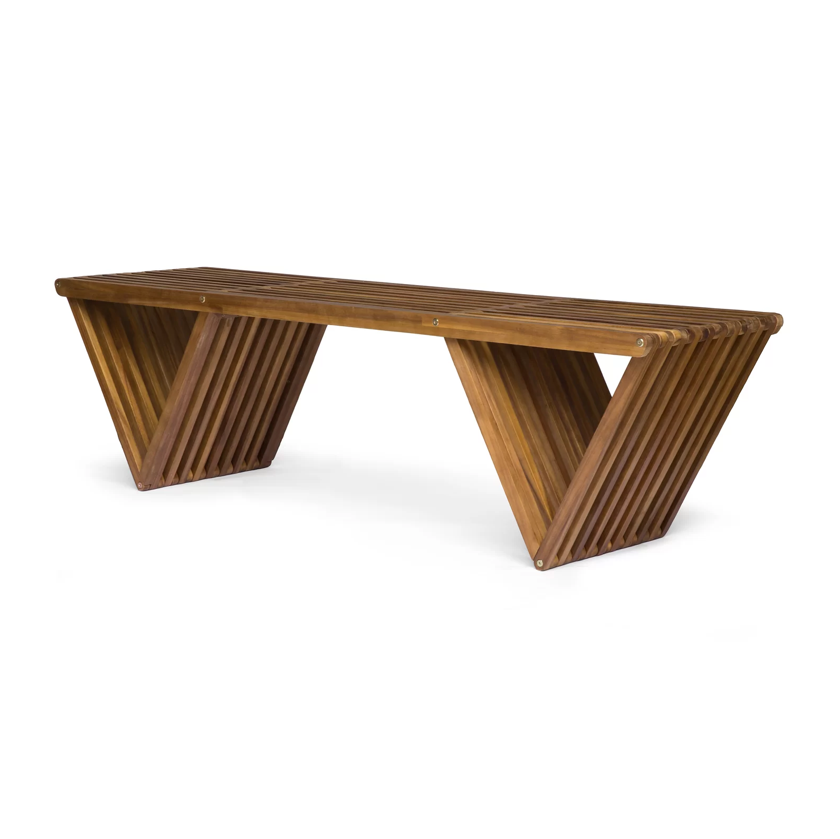
Price: $164.99
This modern acacia outdoor bench is surprisingly affordable for its good looks.
What are the Pros and Cons of Teak?
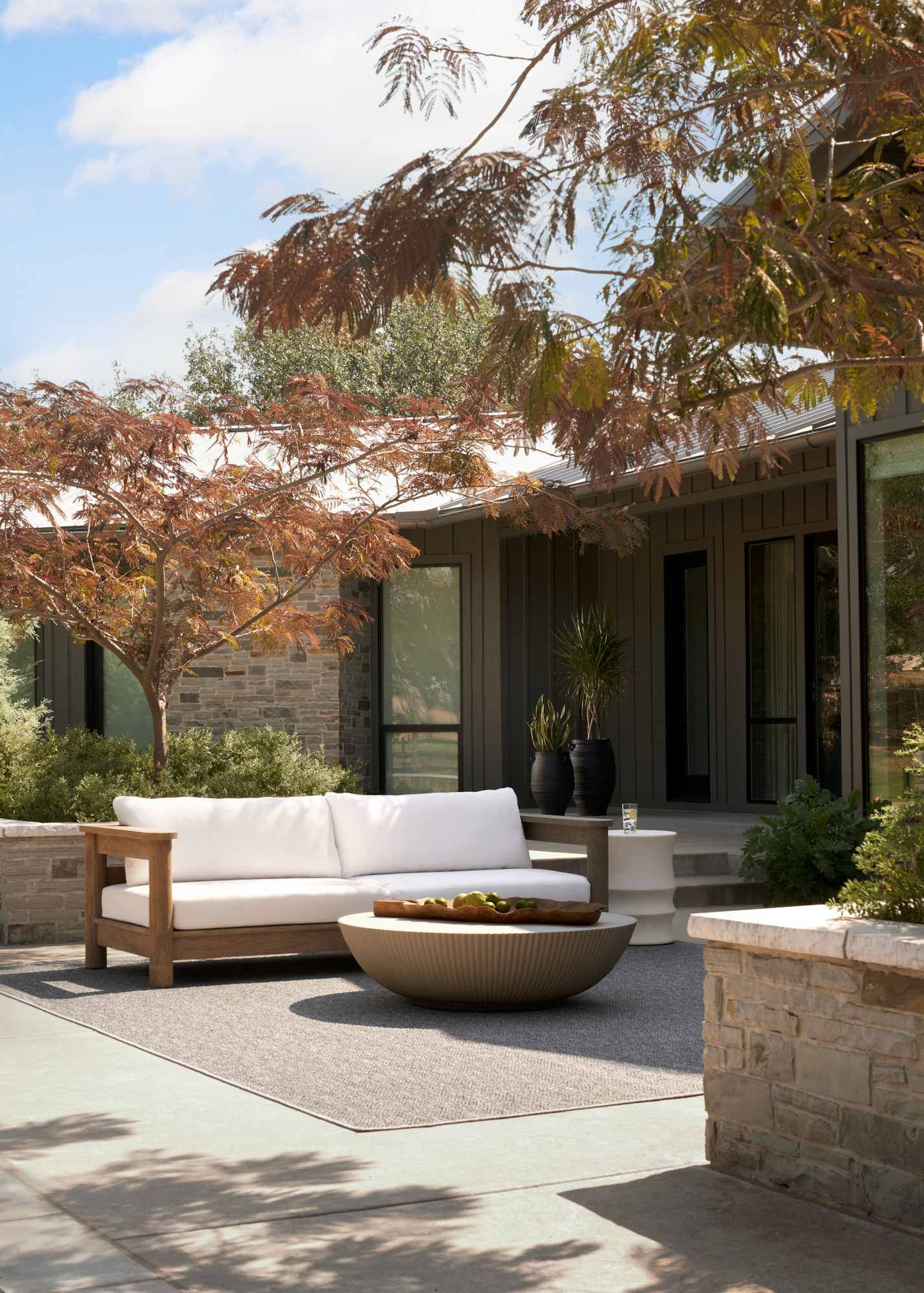
Pros:
- Strength: Teak is known for its exceptional strength, with a high Janka hardness rating (2,330).
- Weather-resistance: Teak has a very dense grain, which makes it highly resistant to moisture damage like warping or cracking. A tropical wood native to South Asia it's also naturally resistant to UV rays.
- Durability: "Teak's dense grain and natural oils make it resistant to moisture, pests, and rot, which ensures that teak furniture remains strong and looking its best for years to come," says Tanya Rechberger, King Living Design Development Manager.
- Aesthetics: Teak has a soft, golden hue that's highly sought after in modern homes. Victoria says: "It has an elegant golden-brown color that ages to a distinguished silver-gray. It's highly regarded for classic and modern outdoor settings." And Tanya adds: "Teak’s warm, golden-brown tones and fine, straight grain give it a luxurious and timeless appearance. Teak is versatile and can complement both traditional and contemporary interior designs."
- Maintenance: Teak is a low-maintenance wood choice. Victoria says: 'Teak's natural oils protect it from moisture and pests, requiring less frequent oiling or staining." And Tanya adds: "Teak requires minimal maintenance if you appreciate the natural patina it develops over time. It's as simple as sweeping with a soft hand brush and cleaning with mild (pH-neutral) soapy water and a microfiber cloth or sponge."
Cons:
- Price: "Teak can be more expensive than other hardwoods due to its superior qualities and time for the trees to mature," explains Tanya Rechberger. "However, its durability and long-lasting nature often justify the higher cost, especially for those looking for furniture that will stand the test of time." And Victoria Harding agrees, adding: "Teak has high-end and premium pricing, reflecting its durability and longevity."
- Sustainability: There has historically been issues with illegal logging of teak, and it is a slower growing tree than acacia. Always make sure your teak comes from FSC-certified or SVLK-certified sources.
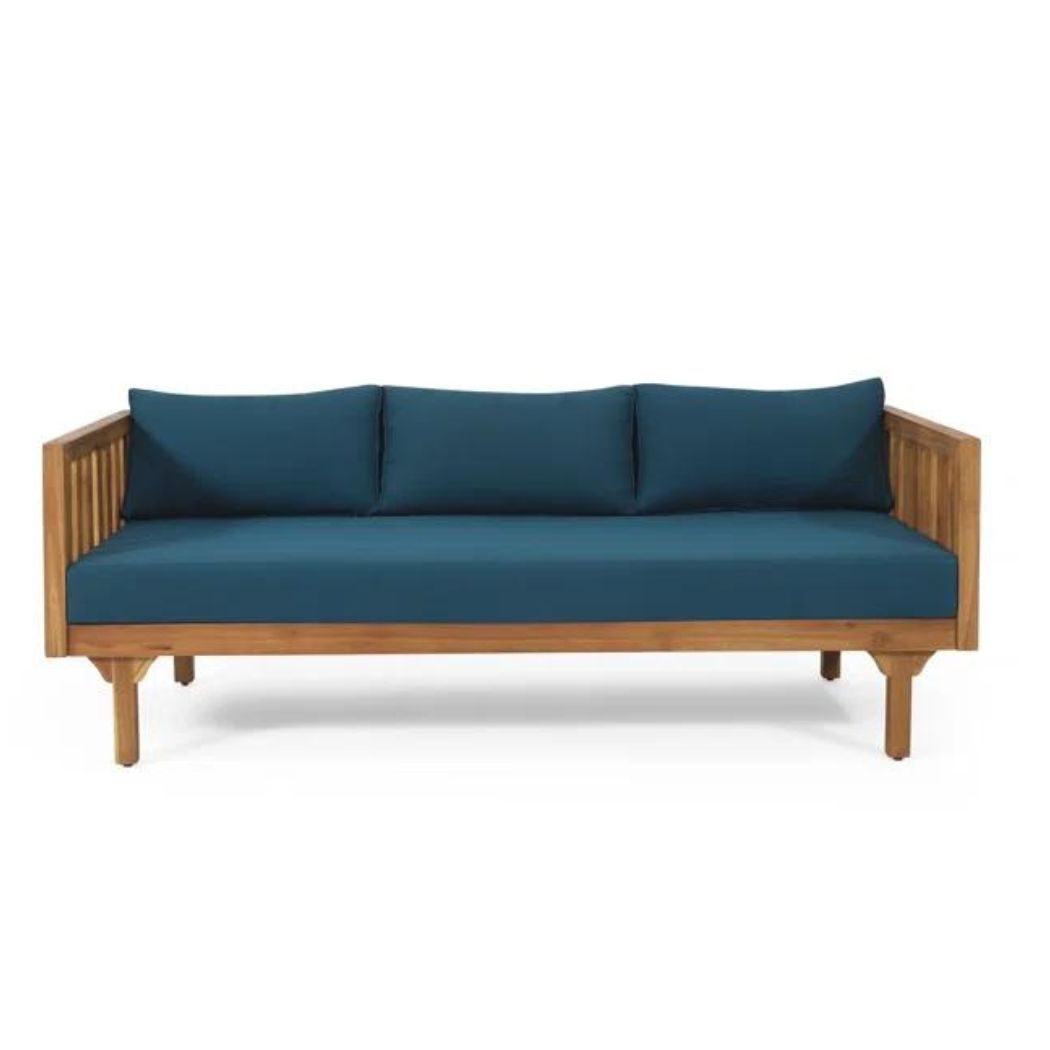
Price: $489.99
This inexpensive teak sofa from Wayfair is one of the cheapest we found.
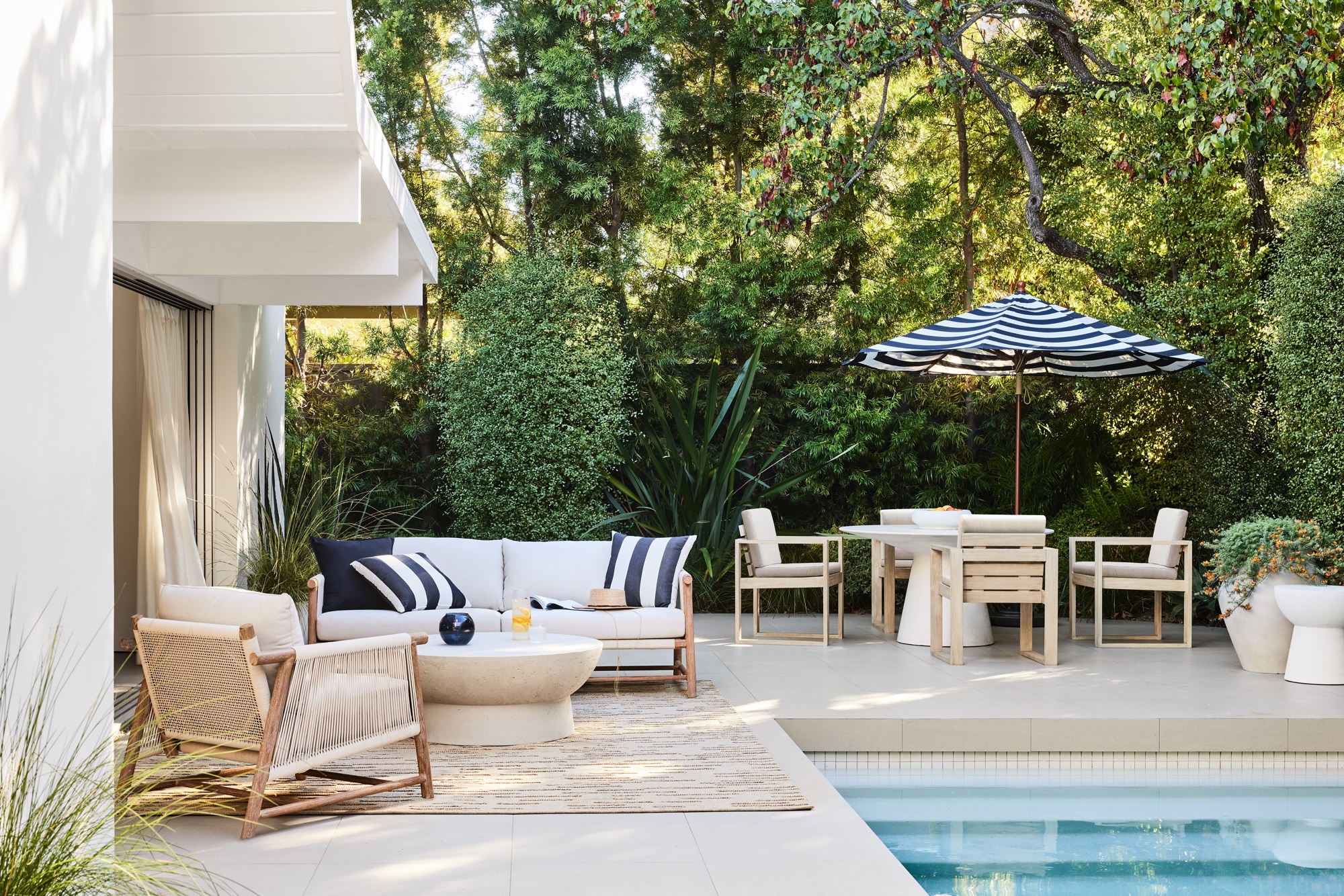
Conclusion
'When deciding between teak and acacia, the best choice depends on your priorities," says Victoria. "If you value longevity, low maintenance, and a classic aesthetic, teak is the clear winner. Its ability to withstand the elements with minimal upkeep makes it a long-term investment that can enhance any outdoor space."
She adds: "However, if budget-friendly and sustainable is your primary concern, acacia is an excellent alternative. While it may require more frequent maintenance, its strength and aesthetic appeal make it a compelling option for those who want quality outdoor furniture without the higher cost."
It's also a good idea to consider your climate. If you deal with extreme or harsh weather, teak's durability will win out and ensure you're making a good long-term investment.
Be The First To Know
The Livingetc newsletters are your inside source for what’s shaping interiors now - and what’s next. Discover trend forecasts, smart style ideas, and curated shopping inspiration that brings design to life. Subscribe today and stay ahead of the curve.
Ruth Doherty is a lifestyle journalist based in London. An experienced freelance digital writer and editor, she is known for covering everything from travel and interiors to fashion and beauty. She regularly contributes to Livingetc, Ideal Home and Homes & Gardens, as well as titles like Prima and Red. Outside of work, her biggest loves are endless cups of tea, almond croissants, shopping for clothes she doesn’t need, and booking holidays she does.
-
 Turns Out the Coolest New Café is Actually In Your Kitchen — Here's How to Steal the Style of TikTok's Latest Trend
Turns Out the Coolest New Café is Actually In Your Kitchen — Here's How to Steal the Style of TikTok's Latest TrendGoodbye, over-priced lattes. Hello, home-brewed coffee with friends. TikTok's 'Home Cafe' trend brings stylish cafe culture into the comfort of your own home
By Devin Toolen Published
-
 5 Bathroom Layouts That Look Dated in 2025 — Plus the Alternatives Designers Use Instead for a More Contemporary Space
5 Bathroom Layouts That Look Dated in 2025 — Plus the Alternatives Designers Use Instead for a More Contemporary SpaceFor a bathroom that feels in line with the times, avoid these layouts and be more intentional with the placement and positioning of your features and fixtures
By Lilith Hudson Published
